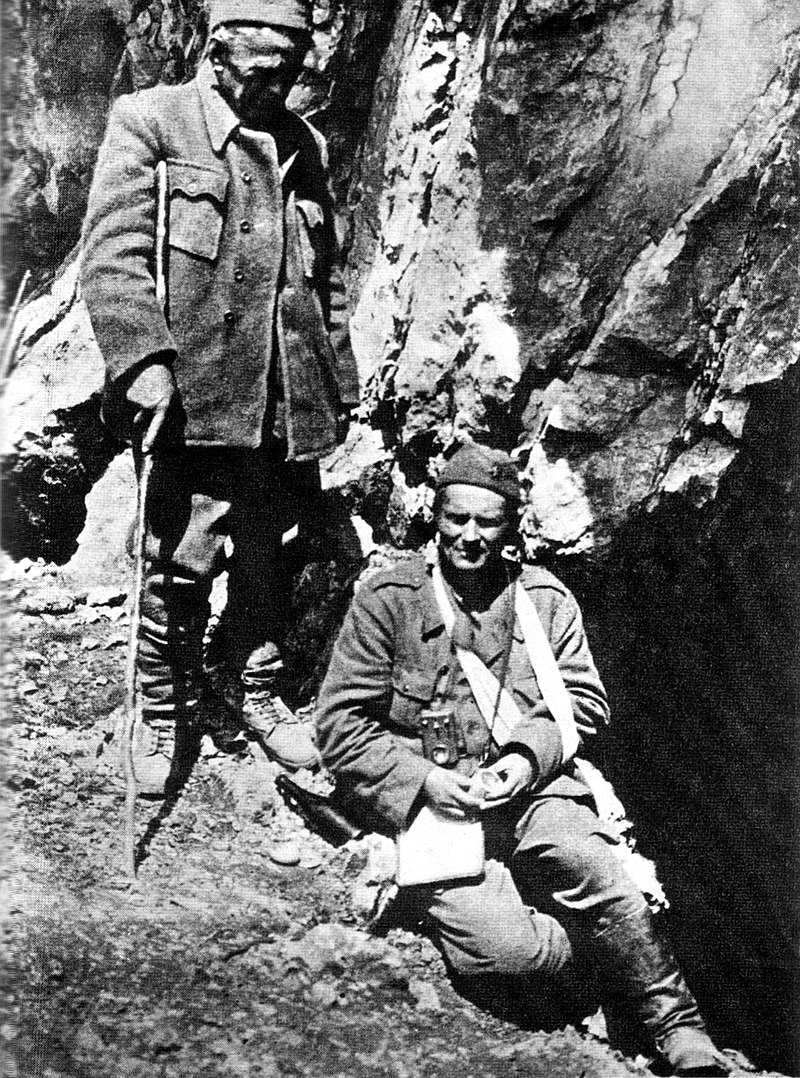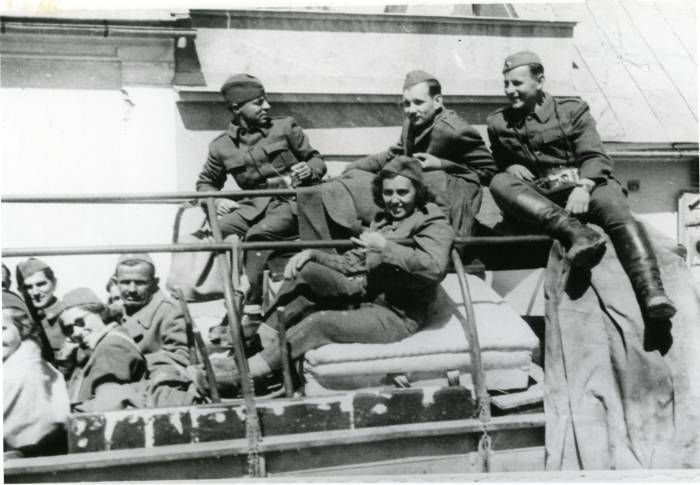The operation immediately followed Case White which had failed in accomplishing the same objectives: to eliminate the central Partisan formations and capture their commander, Marshal Josip Broz Tito.
| Case Black | |||||||
|---|---|---|---|---|---|---|---|
| Part of World War II in Yugoslavia | |||||||
 Map of Case Black, superimposed on modern-day borders | |||||||
| |||||||
| Belligerents | |||||||
| Axis: | Allies: | ||||||
| Commanders and leaders | |||||||
| Strength | |||||||
| 127,000 men 300+ aircraft | 22,148 men | ||||||
| Casualties and losses | |||||||
| German casualties: 583 killed, 1,760 wounded, 425 missing Italian casualties: 290 killed, 541 wounded, 1,502 missing Croatian casualties: 40 killed, 166 wounded, 205 missing Total Axis casualties: 913 killed, 2,467 wounded, 2,132 missing | 2/3 killed and wounded (6,391–7,543 killed) | ||||||
| 2,537 pro-Partisan civilian sympathizers executed | |||||||
The Axis rallied 127,000 land troops for the offensive, including German, Italian, NDH, Bulgarian, and over 300 airplanes. The Yugoslav National Liberation Army had 22,148 soldiers in 16 brigades. After a period of troop concentration, the offensive started on 15 May 1943. The Axis troops used the advantage of better starting positions to encircle and isolate the partisans on the Durmitor mountain area, located between the Tara and Piva rivers in the mountainous areas of northern Montenegro and forced them to engage in a fierce month-long battle on waste territory.
 On 9 June Tito was nearly killed when a bomb fell near the leading group, wounding him in the arm. The popular post-war report of the event credited Tito's German shepherd dog Luks, for sacrificing his life to save Tito's. Captain William F. Stuart, a Special Operations Executive operative who was parachuted into Tito's headquarters alongside Captain William Deakin during May, was killed by the explosion, as well.
On 9 June Tito was nearly killed when a bomb fell near the leading group, wounding him in the arm. The popular post-war report of the event credited Tito's German shepherd dog Luks, for sacrificing his life to save Tito's. Captain William F. Stuart, a Special Operations Executive operative who was parachuted into Tito's headquarters alongside Captain William Deakin during May, was killed by the explosion, as well.Partisan commander Josip Broz Tito and Ivan Ribar during the Battle of the Sutjeska. >>>>>
Facing almost exclusively German troops, the Yugoslav National Liberation Army (YNLA) finally succeeded in breaking out across the Sutjeska river through the lines of the German 118th and 104th Jäger and 369th (Croatian) Infantry divisions in the northwestern direction, towards eastern Bosnia.
Three brigades and the central hospital with over 2000 wounded were surrounded. Following Hitler's instructions, German commander in chief Generaloberst Alexander Löhr ordered their annihilation, including the wounded and the unarmed medical personnel. In addition, YNLA troops suffered from severe lack of food and medical supplies, and many were struck down by typhoid.
In total there were 7,543 partisan casualties, more than a third of the initial force.
The German field commander, General Rudolf Lüters in his final report described the so-called "communist rebels" as "well organized, skillfully led and with combat morale unbelievably high".




The successful Partisan breakout helped their reputation as a viable fighting force with the local populace. Consequently, they were able to replenish their losses with new recruits, regroup, and mount a series of counterattacks in eastern Bosnia, clearing Axis garrisons of Vlasenica, Srebrenica, Olovo, Kladanj and Zvornik in the following 20 days.
The battle marked a turning point toward Partisan control of Yugoslavia, and became an integral part of the Yugoslav post-war mythology, celebrating the self-sacrifice, extreme suffering and moral firmness of the partisans.

Allied order of battle
Partisan commander Josip Broz Tito and Ivan Ribar during the Battle of the Sutjeska.
Democratic Federal Yugoslavia Yugoslav Partisans (Partisans Main Operational Group)
1st Proletarian Division
2nd Proletarian Division
3rd Assault Division
7th Banija Division
6th Proletarian Brigade
15th Majevica Brigade
Axis order of battle
Germany
7th SS Volunteer Mountain Division Prinz Eugen
1st Mountain Division
118th Jäger Division
369th (Croatian) Infantry Division
Regiment 4 Brandenburg
reinforced 724th Infantry Regiment (104th Jäger Division)
Italy
1 Alpine Division Taurinense
19 Infantry (Mountain) Division Venezia
23 Infantry Division Ferrara
32 Infantry Division Marche
151 Infantry Division Perugia
154 Infantry Division Murge
forces of Sector Podgorica
Independent State of Croatia
4th Home Guard Jäger Brigade
Bulgaria
63rd Infantry Regiment
61st Infantry Regiment also in the area
(both units under the command of the 369th (Croatian) Infantry Division)
Ei kommentteja:
Lähetä kommentti
Any explosive ammunition or empty cores, you can put in this.